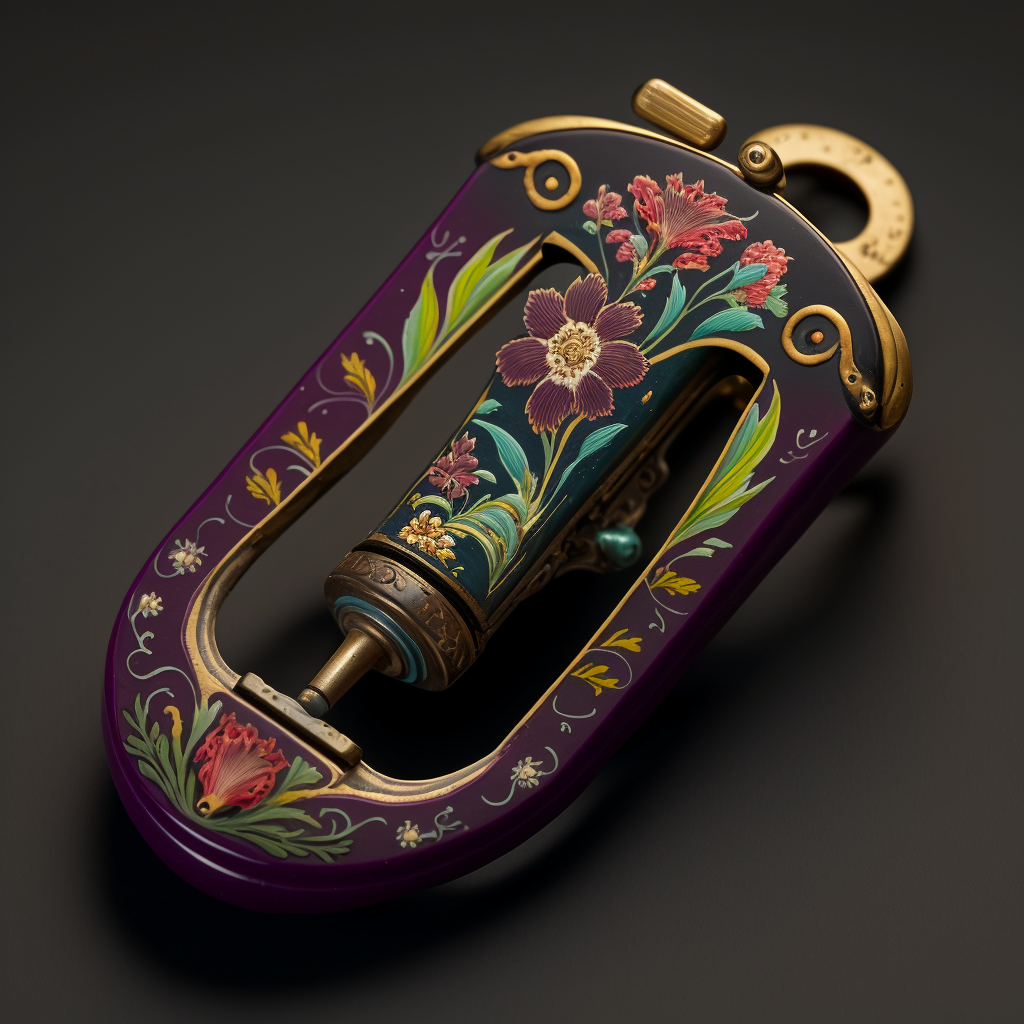← A. Inventions, No. 52
Alice Youngblood (1903–1986)
Commemorative Chip Bag Closures
1938
Union Cooperative Grocers & Dry Goods, est. 1913, New York. Bakelite, brass, and steel, with lithographed floral decoration. 1¾ × 1¾ × ⅜". Collection of the author.
The official colors of the Women’s Social and Political Union were purple, white, and green, on which the Congressional Union for Woman Suffrage modeled their own palette of purple, white, and gold. It was at their behest that these commemorative clips for potato chip bags were introduced on June 14, 1938, in celebration of the passage of the Fair Labor Standards Act, which ensured a minimum wage for all American workers.
While the flsa was hardly a panacea for the gender pay gap in America, it was a milestone for working women, who were then, as now, disadvantaged by unequal pay. These purple keepsakes drew attention to the issue, and celebrated the contributions of American potato chip pioneers such as Laura Scudder, inventor of the potato chip bag.
The gender pay gap had been a political issue in the United States since Reconstruction, and would go on to become the topic of the 1963 Equal Pay Act, title VII of the 1964 Civil Rights Act, the 1994 Fair Pay Act, the 1997 Paycheck Fairness Act, and the 2009 Lilly Ledbetter Fair Pay Act. Thanks to all of these hard-fought political battles, American women today earn an average of only 79¢ for each dollar a man makes, a disparity that worsens at the highest reaches of leadership. A 2011 study by the Chartered Management Institute concludes that if wages for women executives continue to grow at today’s rates, the gender pay gap will be closed by the year 2109.
Published February 1, 2023. Copyright © 2023 Jonathan Hoefler.
About
The objects in the Apocryphal Inventions series are technical chimeras, intentional misdirections coaxed from the generative AI platform Midjourney. Instead of iterating on the system’s early drafts to create ever more accurate renderings of real-world objects, creator Jonathan Hoefler subverted the system to refine and intensify its most intriguing misunderstandings, pushing the software to create beguiling, aestheticized nonsense. Some images have been retouched to make them more plausible; others have been left intact, appearing exactly as generated by the software. The accompanying descriptions, written by the author, offer fictitious backstories rooted in historical fact, which suggest how each of these inventions might have come to be.
These images represent some of AI’s most intriguing answers to confounding questions, an inversion of the more pressing debate in which it is humanity that must confront the difficult and existential questions posed by artificial intelligence.
Previously:
No. 51. Chip Bag Closures
Next:
No. 53. The Anderthalb











